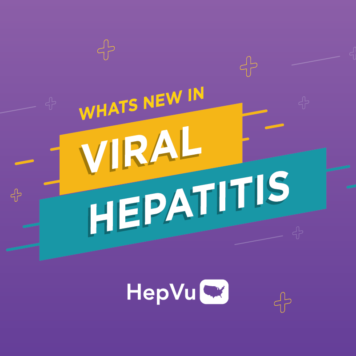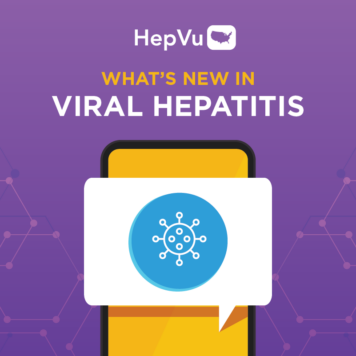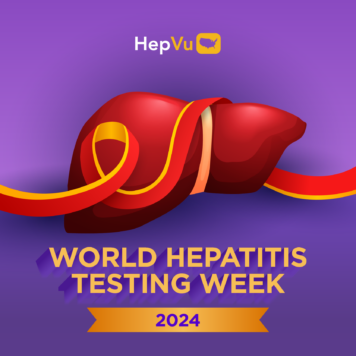Thaddeus Pham is the Viral Hepatitis Prevention Coordinator for the Hawaii Department of Health’s Harm Reduction Services Branch as well as the co-Founder and co-Director of the Hep Free Hawaii Coalition.
Q: Earlier this summer, Hep Free Hawaii, a coalition of over 90 organizations, released its first viral hepatitis elimination strategy for the state of Hawaii. This comprehensive plan features 5 main priorities—Awareness and Education, Access to Services, Advocacy at All Levels, Equity in Everything, and Data for Decision-Making. How did Hep Free Hawaii come to select these priorities and the strategic directions associated with each priority?
When we started this process, we looked at many plans. We compared how folx (this is the spelling we try to use to honor trans and gender-nonconforming people) framed viral hepatitis and what seemed to work around the country. Our plan was also informed by other federal and global strategies, but it ultimately came down to our community feedback. We wanted our plan to reflect the needs of our local communities and the priorities of our local stakeholders. We listened to the feedback of policymakers, government workers, medical providers, patient advocates, and public safety officials. It was a long and messy, but delightfully iterative process.
The entire plan was driven by our community coalition because there was no dedicated funding for planning. I always like to highlight that our elimination planning started nine years ago when our coalition formed. Essentially, it took nine years of relationship-building and creating a network of care in our local communities that allowed us to do this process in such a meaningful way. Even though it took us this long, our experience can hopefully show others how to create a plan with little financial capital, but lots of relationship capital.
Q: What drove the Hawaii Department of Health to develop a formal Elimination Strategy, and how did you ensure representation from organizations already doing activities addressing hepatitis?
We had a values-driven approach, and we stated it at the beginning of every meeting. We approached everything with the core values of Aloha, intersectionality, social justice, and harm reduction. For those who may not know, aloha is a way of living and treating each other with love and respect. It also reflected the land and people of the Hawaiian Kingdom. We laid the groundwork around shared values and an established rapport within our communities. It is how we were able to balance all the voices because everyone was heading in the same direction, even though everyone had their own individual priorities and opinions.
Q: Hep Free Hawaii’s plan features strategic directions and examples of “micro-elimination activities” for each priority. Can you describe what you mean by “micro-elimination activities” and perhaps give an example of how micro-elimination activities might differ for various risk groups? Did Hawaii learn any best practices from other states’ or countries’ elimination plans?
Over the past nine years, Hep Free Hawaii has been nimble and responsive despite a lack of adequate resources. We became very adept at doing micro-elimination without even knowing we were doing it. We found peer-reviewed articles about this concept, which highlighted small community-driven projects in specific populations to address viral hepatitis elimination. This model was especially relevant during the COVID-19 pandemic, especially considering the substantial reallocations of viral hepatitis resources to support COVID-19 surveillance and response. We had to adapt quickly to maintain essential viral hepatitis health services, but small community-based efforts continue to serve us well thus far.
In terms of key takeaways from other strategic plans, we realized that accessibility was an important priority for our own plan. If you compare our plans to others, our plan is intentionally public-facing. We tried to make our plan short with more visuals than text using (mostly) simplified language. We also created a one-pager for easy understanding. If we truly want Hep Free Hawaii’s plan to be accessible and engage people at all levels, we cannot make a plan that’s only intended for policymakers.
Q: How did Hep Free Hawaii ensure that A, B, and C were all included in the comprehensive plan?
I think that we might be one of the first plans in the U.S. to target these three types of viral hepatitis. Over the nine years of our coalition, we worked to meaningfully address the needs of the community. When we talked about Hepatitis B, we made sure to account for the healthcare challenges of foreign-born Asian Pacific Islanders. When we thought about people who inject drugs, we connected the dots to Hepatitis C infections. The desire to protect our houseless communities led to Hepatitis A conversations as well. It just made sense to include all three of the most common types of viral hepatitis in our plan.
Q: Which aspects of the plan do you feel the most optimistic about when you imagine a hepatitis-free future for Hawaii? Which aspects of the plan do you expect to experience the most obstacles?
We are the most optimistic about our advocacy and our work toward equity because they inform a lot of what we do. By valuing equity over equality, Hep Free Hawaii recognizes that some groups experience more hardships in everyday life than others and strive to ensure that access to health services does not further complicate those personal hardships.
The imagined challenges are twofold. First is access to services during this particular time, and second is data collection. One of our five pillars is “Data for Decision-making.” At present, Hawaii does not receive dedicated funding to support viral hepatitis surveillance and we do not have a robust data infrastructure. We need to determine ways to scale up surveillance and incorporate cultural practices of data collection. Hawaii has a deep collection of qualitative data through storytelling and cultural modes of information sharing, but we have yet to integrate this data.
The data that we do have is in little pockets; we know that certain communities are more affected by viral hepatitis in Hawaii than others. Usually, these communities are more marginalized in the social and healthcare sphere: people who inject drugs, people who use drugs, people experiencing homelessness, people who are foreign-born (especially Asian Pacific Islanders), people suffering from mental health issues and LGBTQ+ communities. We are continually figuring out how to include the voices of these people in the narrative to shape the work that we do.
Q: Hawaii’s elimination plan identifies an improved surveillance infrastructure as one of the strategic directions necessary to support the priority area “Data for Decision-Making.” This recommendation is consistent with CDC’s recently released strategic plan calling for the establishment of comprehensive national viral hepatitis surveillance. Can you provide a few examples of how current shortcomings in viral hepatitis surveillance hinder elimination efforts?
This is why we have data as one of our five priorities. Someone once told me, “Don’t get mad, get data.” I think the lessons learned are that you don’t have to be an epidemiologist to value and use data. A more robust surveillance infrastructure would allow us to target our efforts better and allocate our limited resources more methodically. We can identify gaps and establish standardized metrics to compare across different stakeholder groups. Data is valuable for advocacy and policy. If we have strong numbers, we can justify more funding and more interventions that we might need on the local level. We could then use that data for policy change and systemic change. And, as always, we would also want to ensure that qualitative, culturally-based data provide richer context for quantitative reports.
Q: How can stigma reduction support Hep Free Hawaii’s viral hepatitis elimination efforts?
Equity is a priority for us to reduce stigma in our work. We worked to include people with lived experiences not only in the planning but also in the implementation. We recognize that not everyone who wants to be involved can engage at certain times, in certain spaces, or in certain ways. We wanted to create low threshold opportunities for people to get involved. For example, we try to schedule meetings that are outside of work hours. We also try to create informal sessions and settings such as syringe exchanges or community spaces where folx can share their stories.
Q: What can other state or national groups learn from Hep Free Hawaii’s plan development process? What advice would you give to other state health departments compared to advice for patient advocacy groups?
Engage as many of your community members and stakeholders as possible. Although it is not easy, it is quite valuable. Even during COVID-19 shelter-in-place in Hawaii, we had people attending Zoom meetings to discuss the strategy and continue the progress. There was so much engagement, and I think it’s because everyone felt heard and honored.



